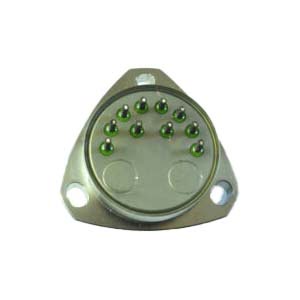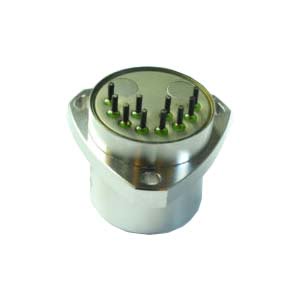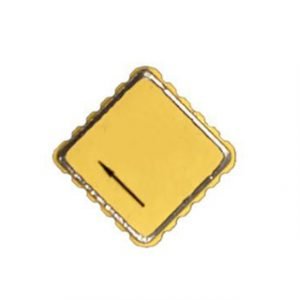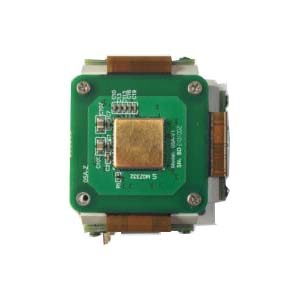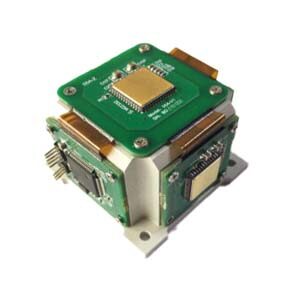Quartz flexible pendulum accelerometer and its development status. As a kind of force feedback pendulum accelerometer, quartz flexible pendulum accelerometer is developed on the basis of liquid floating pendulum accelerometer. The difference between the two lies mainly in The detection quality of the quartz flexible accelerometer is not floating, but is elastically connected to the flexible beam support, introducing elastic moments, so this accelerometer has higher accuracy, strong anti-disturbance capability, large measurement range, and overload capacity Strong.
The performance of the flexible material directly affects the performance of the accelerometer. The materials that can be used as flexible pendulums are mainly metal and quartz. The traditional liquid-floating pendulum accelerometer pendulum uses metal materials, and the thermal expansion coefficient of quartz is much smaller than steel, and the material performance is better than metal. Moreover, quartz has high fatigue strength and the material itself has a small hysteresis, which is very suitable for the pendulum of the accelerometer. As soon as the quartz flexible accelerometer came out, it quickly replaced the liquid-floating pendulum accelerometer and became an indispensable key device in inertial navigation and guidance systems.
Composition and working principle
It is mainly composed of up and down torquers, pendulum components and servo circuits. The coil is bonded with the quartz pendulum by adhesive method, and the coil skeleton and pendulum constitute the pendulum component to realize the function of detecting the quality and sensitive to the external input acceleration.
The torquer is composed of yoke iron, magnetic steel, magnetic pole plate and compensation ring, in which the magnetic steel selects a suitable permanent magnet material to form a permanent magnet to establish a magnetic field, the yoke iron and the magnetic pole plate make the magnetic field form a magnetic loop along the yoke iron, and the compensation ring compensates the magnetic leakage. The upper and lower torquer adopts the same pole to the top structure to achieve the push pull mode, and the upper and lower torquer and the pendulum plate are fixed as a whole through the stomach belt.
When the external acceleration is input, the pendulum will leave the equilibrium position under the action of inertia force. At this time, the differential capacitance value composed of the upper and lower surface of the pendulum plate and the upper and lower torque end face will change, and this electrical signal is output to the servo circuit through the terminal. The amplified current signal is output to the coil, and the pendulum is restored to the equilibrium position by push-pull action using the ampere force of the energized wire in the magnetic field. When the deflection Angle of the pendulum is very small, the current is approximately linear with the input acceleration. At this time, the input acceleration can be obtained by detecting the current.
Application
At present, quartz flexible pendulum accelerometers have been widely used in the measurement of various linear accelerations, vibration accelerations, and parameters such as speed, distance, angular velocity, and angular displacement. It has been successfully used in military and civilian fields such as satellite microgravity measurement systems, high-precision inertial navigation systems, rock-based drilling and oil drilling, continuous inclinometer systems, launch vehicles, ballistic missiles, and spacecraft.
The quartz flexible accelerometer uses high-quality quartz crystals to achieve high precision acceleration measurement with extremely high reliability and stability. Its special flexible construction enables it to adapt to high acceleration applications under various environmental conditions, such as high temperature, high pressure and high vibration environments. In addition to being widely used in aerospace and military fields, quartz flexible accelerometers are also widely used in automotive, medical and scientific research fields. In the automotive sector, they can help automakers improve the performance and safety of their vehicles while improving their fuel efficiency. In the medical field, quartz flexible accelerometers can be used to monitor and diagnose human movement and physiological processes. In the field of scientific research, they can be used to study earthquakes, crustal movements, cosmology, and microgravity environments.
If you want to get more details about accelerometer, pls visit https://www.ericcointernational.com/accelerometer/quartz-accelerometer/
More Technical Questions
1.What are the Advantages and Disadvantages of Quartz Accelerometers?
2.What is Sensitivity and Measurement Range in Quartz Accelerometer?
3.Quartz Accelerometer VS MEMS Accelerometer
4.What Are The Components Of Accelerometers?
5.Why do we Need Accelerometer?
6.Multi-Dimensional Understanding of High Precision Quartz Accelerometer
Products in Article

